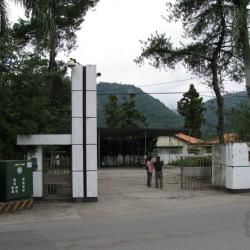The second office of the Wanda Power Station of the Taiwan Power Company was originally the Wushe Public School during the Japanese Occupation and the site of the Wushe incident. In the 5th year of Taisho (1916), Japanese people set up Wushe Public School in Wushe area to provide education and placement for Japanese children in Wushe area. On October 27, the 5th year of the Showa era (1930), the Japanese held a sports event here. The staff of the Camphor companyand, the Japanese police officers and officials who were stationed in the headquarters of Nengao County and neighboring areas gathered here. The garrisons were weak in manpower, and was easy to attack and rob weapons and ammunition. Therefore, the six Sediq tribes chose to revolt on this day. After the incident, the Japanese police piled the 138 dead bodies on the playground of the Wushe Public School, and ordered the police to cut firewood and cremate the bodies. It took three days and three nights to complete the cremation.
Nenggao Traversing
Wushe, located in Ren'ai Township, Nantou County, sits above the terrace on the west bank of the upper Meixi creek at an altitude of 1,148 meters. It is the intersection of three historic trails: Nenggao Traversing Historic Trail, Hehuan Traversing Historic Trail and Pyanan Historic Trail. It is also the hub of the Aiyong Boundary and has been vigorously constructed by the Governor-General in Taiwan, with administrative agencies, trade companies, hotels, and so on.
In the past, Wushe was not inhabited locally. The Zhuo group of the Bunun tribe called it Ish-Tibuo, which means the northern tribe. During the Qing period, the Han people used Hoklo language to transliterate it to Zhiwushe. Later, it got referred to as Wushe. In the post-war period, the National Government established the township office on Yingtai next to Wushe main street. Today, the residents are mostly Han Chinese.
